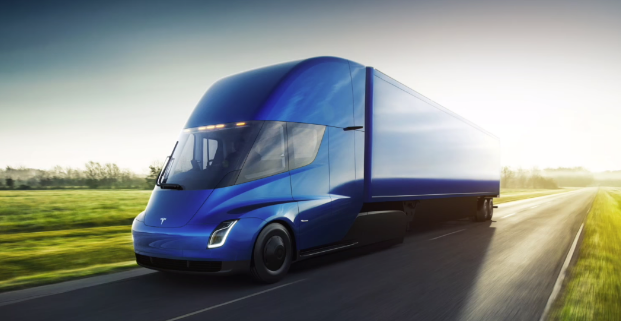Trucking is the biggest form of freight transportation worldwide with roughly 70 percent of goods being shipped on the road in Europe and the United States, while in China this number is as much as 75 percent. Even though trucking takes up a huge part of freight transportation, many industry players are still operating inefficiently. Companies are facing difficulties with high costs, growing driver shortages and stricter emission standards preventing them from realizing their full potential (Keese, 2018). The rise of artificial intelligence (AI) may be the solution to deal with these challenges.
Artificial Intelligence is capable of automating tasks and learn with time. This means that AI-powered systems can eventually take decisions by themselves and carry out critical-thinking tasks. One of the applications of artificial intelligence is autonomous vehicles which could be beneficial for cars, taxi’s and trucks (Joshi, 2019). With trucks making up such a vast majority of the transportation chain, self-driving trucks could be used to drive down maintenance and administration costs, reduce the number of accidents and increase productivity. Namely the costs of labour will drastically decrease with the use of artificial intelligence, as long driving hours and stopping for a break will no longer be needed (Antony, 2017). Next to autonomous trucks, truck platooning is an AI-powered technique which is being tested in several countries in Europe. With truck platooning, several vehicles are driving within minimal distance of each other, allowing them to accelerate and brake automatically at the same time. The truck in the front is still being driven by a human driver, but in the following trucks a driver is only needed for complex traffic situations such as roundabouts and unexpected incidents. The expectation is that in the future a driver for these following trucks is no longer necessary which essentially means that for driving multiple trucks only one driver is needed (Niestadt et al., 2019).
As the trucking industry becomes more data driven, artificial intelligence has the potential to bring great benefits to road transport. A world full of autonomous trucks will bring many opportunities as well as new challenges to the industry. Countries may have to invest in their infrastructure and companies will have to develop new strategies in order to keep up with the ongoing changes. Nonetheless, artificial intelligence is setting up to become a valuable asset in the world of truck transportation. It will be interesting to see how this industry will develop in the future.
Antony, A. (2017 december). How will AI impact the transportation industry? Geraadpleegd op 26 september 2019, van https://www.prescouter.com/2017/12/ai-impact-transportation-industry/
Joshi, N. (2019, 26 juli). How AI Can Transform The Transportation Industry. Geraadpleegd op 26 september 2019, van https://www.forbes.com/sites/cognitiveworld/2019/07/26/how-ai-can-transform-the-transportation-industry/
Keese, S. (2018, 13 september). The future of trucking: Challenges for the transportation sector. Geraadpleegd op 26 september 2019, van https://www.rolandberger.com/en/Publications/The-future-of-trucking-Challenges-for-the-transportation-sector.html
Niestadt, M., Debyser, A., Scordamaglia, D., & Pape, M. (2019 maart). Artificial intelligence in transport. Geraadpleegd op 26 september 2019, van http://www.europarl.europa.eu/RegData/etudes/BRIE/2019/635609/EPRS_BRI(2019)635609_EN.pdf


Interesting read, Jochem! I looked into the concept of plantooning a few weeks ago as well and was fascinated by the idea. Would be great if this can be implemented on a large scale quickly, also for buses and perhaps even cars. Imagine it to be implemented for delivery transportation systems too and how much that would increase efficiency. Plantooning is, in principle, the idea that vehicles “talk” to each other. Curious to see how safe and reliable it will prove to be in the coming years.